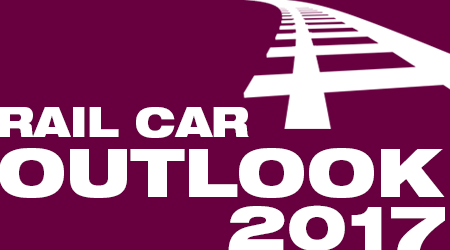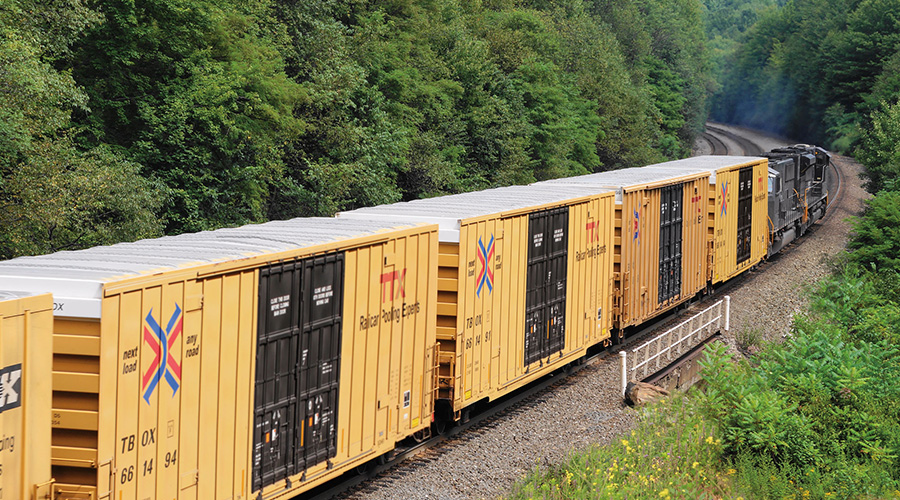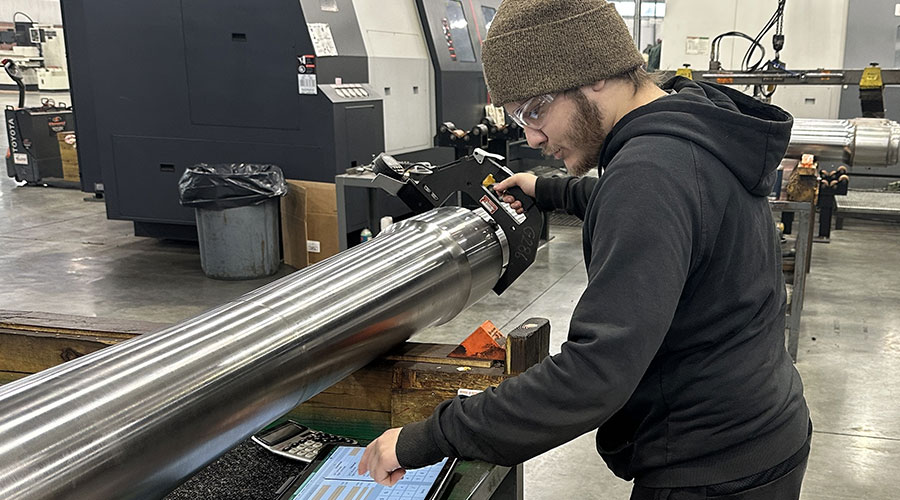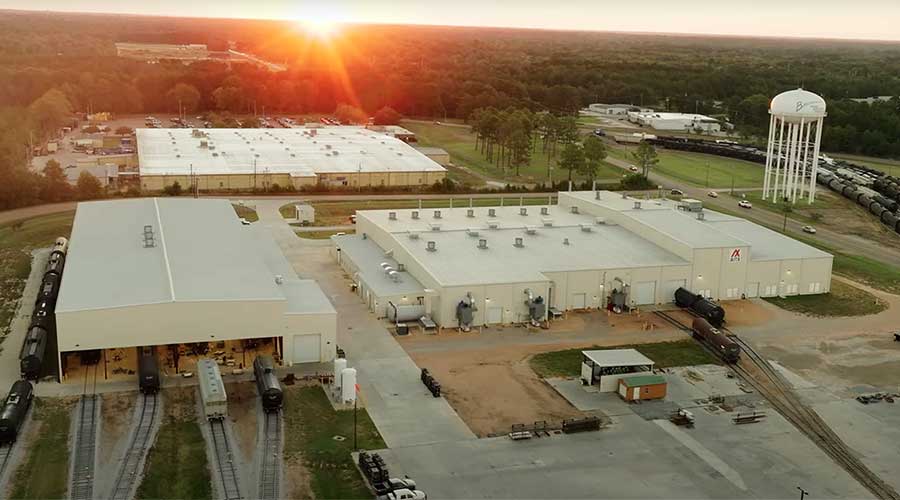Stay updated on news, articles and information for the rail industry
December 2016
Rail News: Mechanical
Outlook 2017: Rail-car forecast by Richard Kloster

When we hear the word “carload,” we think freight. But freight doesn’t move by itself. It needs a rail car. If you have the “car,” you can get the “load.” On the other hand, if you don’t have a load, then you don’t need the car. It’s this kind of environment that the rail industry has been living in for the past year. Except for grain, waste and nonferrous scrap, and the ubiquitous “all other freight” category — code for empty rail cars moving to storage — all freight-rail segments are down this year.
Through 2016’s first 10 months, U.S. carloads were down 10 percent compared the same 2015 period, according to Association of American Railroads figures. This is a significant decline in loads that resulted in a reduced need for cars and pushed up the number of cars in storage to about 350,000.
So, as we move into 2017: Are there any positives that the rail equipment industry can look for? While the answer to this question is mixed, the positives may outweigh the negatives. From a macro-freight standpoint, North American carloads next year are projected to increase 2.5 percent over 2016’s total, with all six major fleets participating in the increases. This will help draw the surplus down by 21 percent over the year, and increase the utilization of the fleet — both of which would be welcome developments.

However, this improved freight environment will not stem the decline in new rail-car deliveries, which are forecast to decline by 34 percent year over year in 2017, to about 39,000 cars. Tank cars and covered hoppers will still dominate deliveries, accounting for 79 percent of the total, but deliveries in all rail-car segments will be lower next year. Orders are likely to improve, but with 2016 orders on pace to be the worst since 2009, this is probably a small consolation.
A rail-car backlog readjustment
The backlog is another story. While it remains high at more than 77,000 cars, there is a disconnect in the backlog that was created over the last two years due to the over-ordering of energy-related equipment — particularly crude-by-rail (CBR) tank cars and frac sand covered hoppers. As a result, companies with prior orders have attempted to switch their car-type mix, or even cancel orders. The hope is that this backlog readjustment, which has had a dampening effect on new orders, will be completed soon.
This brings us to the main theme for 2017: the transition of the new car market from one dominated by energy-related car types to a more traditional, replacement-driven market that extends across all car types. At least that’s the hope, as we’re in the early stage of this transition. The grain and the plastic pellet covered hopper fleets provided significant new car demand in 2016, and while deliveries for both will be lower in 2017, each are projected to be well above their long-term averages.
On the other hand, the frac sand covered hopper build cycle for the most part will end in 2017. Meanwhile, the cement and mineral traffic segments will generate modest new car demand for small-cube covered hoppers. For the tank car fleet, new deliveries in 2017 will be well above their long-term, pre-CBR delivery average, as this fleet continues to shift to non-energy related equipment.
For the large general purpose tank cars, which are used overwhelmingly by crude and ethanol shippers, the decision to move to a retrofitted car or a new car (to meet new regulations) remains problematic.
Earlier this year, some car owners began retrofit programs. But so far, the number of cars that have been retrofitted is relatively small. While these retrofit programs will continue into 2017, most cars will end up in ethanol rather than crude service as crude shippers tend to be opting for new cars.
For other fleet segments, deliveries will be flat or lower in 2017. A modest build cycle in the box-car fleet began in 2016 and will continue. New coal car demand will remain weak to non-existent. In the gondola fleet, the only new car demand will be for mill gondolas; deliveries of new, non-coal open top hoppers will be minimal. Flat car deliveries will be down considerably from 2016’s total, and concentrated in the non-intermodal portion of the fleet.
Of course, more rail traffic would cure a lot of sins for the fleet, not the least of which would be “loads” for the “cars” we already have — as well as the base for the beginning of the next new rail-car build cycle.
Richard Kloster is senior vice president and chief commercial officer of AllTranstek LLC, a private transportation consulting company that provides fleet management, technical and strategic consulting to the rail industry. In conjunction with FTR Intel, he forecasts the rail equipment markets for a broad client base.
Keywords
Browse articles on rail cars tank cars AllTranstek FTRContact Progressive Railroading editorial staff.


 LRW Honors Amtrak’s Acheson As Railway Woman Of The Year
LRW Honors Amtrak’s Acheson As Railway Woman Of The Year
 From Editor-In-Chief Foran: Of Gender Equity And Inclusion
From Editor-In-Chief Foran: Of Gender Equity And Inclusion
 Spotlight On Some Of Today’s Rail Safety Products
Spotlight On Some Of Today’s Rail Safety Products
 Women of Influence in Rail eBook
Women of Influence in Rail eBook
 railPrime
railPrime








